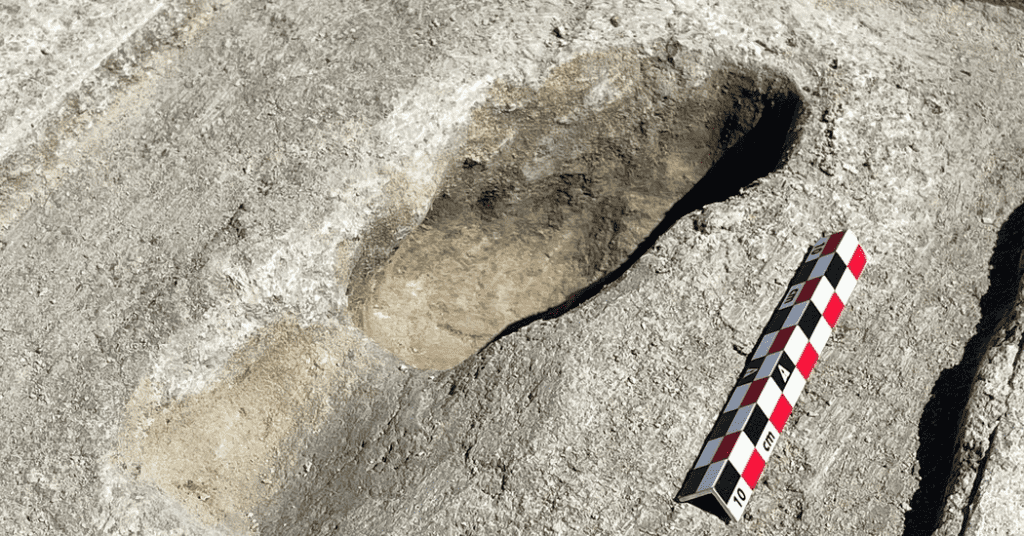A set of mysterious ‘ghost footprints’ in the salt flats of a Utah desert have been discovered by archaeologists.
They have been named such because of their earthly composition: They become visible only after it rains and the footprints fill with moisture and become darker in color, before disappearing again after they dry out in the sun.
Researchers accidentally stumbled upon this discovery in early July as they drove to another nearby archaeological site at Hill Air Force Base in Utah’s Great Salt Lake Desert.

They used ground-penetrating radar (GPR) to find at least 88 individual footprints belonging to a range of adults and children, potentially as young as 5 years old.
The ghostly prints were left by bare human feet at least 10,000 years ago when the area was still an extensive wetland. The tracks could also date back to 12,000 years ago during the final layer of the last ice age during the Pleistocene epoch (2.6 million to 11,700 years ago).
The discovery of so many ancient footprints is a “once-in-a-lifetime discovery,” Anya Kitterman, the cultural resource manager at Hill Air Force Base who oversaw the archaeological work, said in a statement. “We found so much more than we bargained for.”
During the transition from lake to dry salt flats, the area was briefly a large wetland that was occupied by humans up until 10,000 years ago, according to the statement.
During this time, the conditions would have been perfect to create the ghost footprints, the researchers said.
The footprints have since been filled in with salt as the wetlands dried out, making them indistinguishable from the surrounding landscape when they’re dry, Duke added.

Less than a mile (1.6 kilometers) away from where the tracks were found, a previous research group uncovered a hunter-gatherer camp dating to 12,000 years ago, where the humans who left the prints might have lived.
The researchers involved with the new finding have collected some of the footprints to determine their exact age. They will use radiocarbon dating to analyze small pieces of organic material that could have been trapped in the sediment by the foot of whoever left the prints, according to the statement.
In September 2021, a study revealed that 60 human footprints in White Sands National Park in New Mexico dated to between 21,000 and 23,000 years ago, making them the oldest “unequivocal evidence” of humans in the Americas. These footprints were also discovered using GPR.
“We have long wondered whether other sites like White Sands were out there and whether GPR would be effective for imaging footprints at other locations,” Thomas Urban, an archaeologist at Cornell University who developed the GPR survey technique used at White Sands and more recently at the Hill Air Force Base, said in a statement.

“The answer to both questions is yes.”
“There is an immediate human connection to seeing human footprints,” Duke said. “To see them from a distant past, especially so much different than it looks today, can be impactful.”


